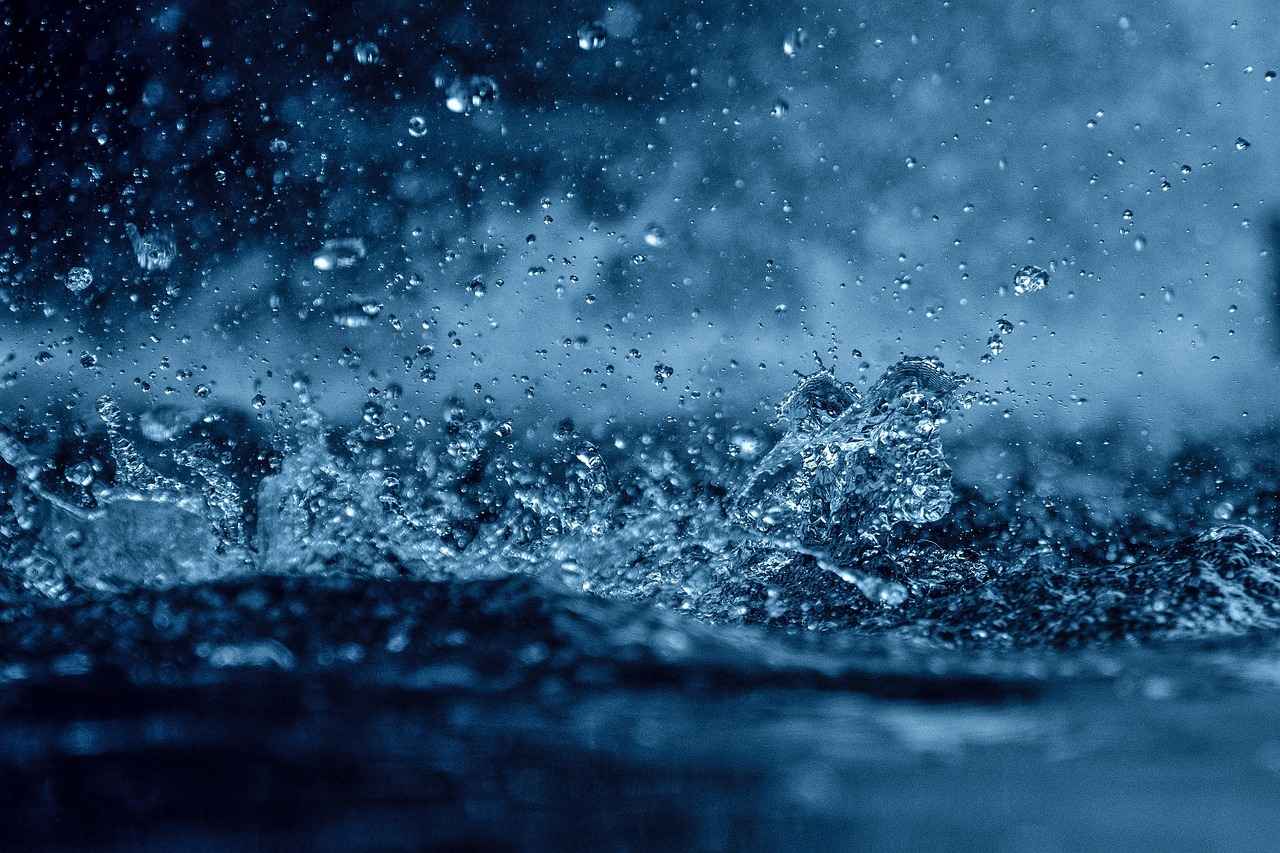Water fasting has gained popularity as a method for weight loss, attracting individuals seeking quick and effective results. This article delves into the concept of water fasting for weight loss, offering a comprehensive calculator to help track your progress. Additionally, we will discuss the benefits and risks associated with this fasting method, along with practical tips to ensure success.
What is Water Fasting?
Water fasting is a practice where individuals abstain from all food and consume only water for a designated period. Historically, various cultures have embraced fasting for spiritual and health reasons. This practice allows the body to enter a state of metabolic adaptation, where it begins to utilize stored fat for energy, leading to weight loss.
How Does Water Fasting Work for Weight Loss?
Understanding the science behind water fasting is essential for anyone considering this method. During a water fast, the body undergoes a process where it depletes glycogen stores and shifts to burning fat for fuel. This transition is not only effective for weight loss but also promotes cellular repair and can enhance metabolic health.
The Role of Ketosis in Water Fasting
One significant aspect of prolonged water fasting is the onset of ketosis. In this metabolic state, the body efficiently burns fat for energy, resulting in accelerated weight loss. Ketosis also has potential cognitive benefits, offering improved mental clarity and focus.
Benefits of Achieving Ketosis
- Enhanced fat loss
- Increased energy levels
- Improved mental clarity
Signs You Are in Ketosis
Recognizing the signs of ketosis can help you gauge your fasting progress. Common indicators include:
- Increased thirst
- Reduced appetite
- Fruity breath
Caloric Deficit and Water Fasting
Creating a caloric deficit is crucial for weight loss. Water fasting naturally leads to this deficit, as the body consumes fewer calories than it expends. This method can be particularly effective for those looking to jumpstart their weight loss journey.
Water Fast Weight Loss Calculator
Utilizing a weight loss calculator can be an invaluable tool during your water fasting journey. This calculator estimates potential weight loss based on individual parameters such as starting weight, fasting duration, and activity level.
Input Parameters for the Calculator
To effectively use the calculator, you’ll need to input specific parameters:
- Starting weight
- Duration of the fast
- Activity level
Interpreting Your Results
Understanding the results generated by the calculator is essential. It provides insights into expected weight loss and helps set realistic goals for your fasting journey.
Potential Risks of Water Fasting
While water fasting can be effective, it is not without risks. Individuals with certain health conditions should approach fasting with caution. Potential health concerns include electrolyte imbalances and nutrient deficiencies.
Common Side Effects of Water Fasting
Water fasting can lead to side effects such as:
- Headaches
- Fatigue
- Dizziness
Who Should Avoid Water Fasting?
Certain groups should avoid water fasting, including pregnant women, individuals with eating disorders, and those with chronic health conditions. It’s crucial to consult a healthcare professional before starting any fasting regimen.
Tips for Successful Water Fasting
To maximize the benefits of water fasting, consider the following practical tips:
- Stay hydrated: Drink plenty of water throughout your fast.
- Listen to your body: Pay attention to how you feel and adjust as necessary.
Breaking Your Fast Safely
How you reintroduce food after a water fast can significantly impact your health. Start with small, easily digestible meals to avoid digestive issues.

What is Water Fasting?
Water fasting is a practice that has gained significant attention in recent years, particularly for its potential health benefits and weight loss effects. In essence, water fasting involves abstaining from all food and consuming only water for a designated period. This method of fasting is not a new phenomenon; it has been utilized across various cultures and historical contexts for centuries.
Historically, many cultures have embraced fasting as a spiritual or religious practice. For instance, in ancient Greece, philosophers like Plato and Socrates advocated fasting for its mental clarity and health benefits. Similarly, numerous religious traditions, such as Islam, Judaism, and Hinduism, incorporate fasting as a means of spiritual purification and self-discipline. These practices highlight fasting’s long-standing significance in human culture.
From a physiological standpoint, water fasting prompts the body to enter a state of ketosis, where it begins to burn stored fat for energy due to the absence of carbohydrates. This metabolic shift can lead to rapid weight loss, making water fasting an appealing option for those looking to shed pounds. However, understanding the principles behind water fasting is crucial for anyone considering this approach.
During a water fast, the body undergoes several changes. Initially, it utilizes glycogen stores for energy, but as these stores deplete, the body transitions to burning fat. This process not only aids in weight loss but may also offer other health benefits, such as improved insulin sensitivity and reduced inflammation. Furthermore, some studies suggest that water fasting may enhance autophagy, a cellular repair process that removes damaged cells and regenerates new ones.
However, while the potential benefits of water fasting are noteworthy, it is essential to approach this practice with caution. Individuals with certain health conditions, such as diabetes or eating disorders, should consult a healthcare professional before embarking on a water fast. Additionally, prolonged fasting can lead to nutrient deficiencies and other health risks, underscoring the importance of understanding one’s body and needs.
In summary, water fasting is a practice steeped in history and cultural significance, offering potential benefits for weight loss and overall health. By understanding the underlying principles and historical context, individuals can make informed decisions about whether this fasting method aligns with their health goals.

How Does Water Fasting Work for Weight Loss?
Understanding the mechanisms of water fasting is essential for anyone considering this method for weight loss. Water fasting is a practice that involves abstaining from all food and consuming only water for a certain period. This dietary approach has gained popularity due to its potential benefits for weight loss and overall health.
When the body enters a fasting state, it undergoes significant metabolic changes. Initially, the body relies on glucose, a carbohydrate, for energy. However, as fasting continues and glucose stores are depleted, the body shifts to a different energy source: fat. This process is known as lipolysis, where fat cells are broken down into fatty acids and glycerol, which can then be used for energy.
During the fasting period, the body also experiences a decrease in insulin levels. Insulin is a hormone that helps regulate blood sugar levels and fat storage. Lower insulin levels facilitate fat burning, making it easier for the body to mobilize and utilize fat stores. This hormonal shift is crucial for achieving weight loss during water fasting.
Another significant aspect of water fasting is the onset of ketosis. As the body continues to fast, it eventually enters a state of ketosis, where it primarily burns fat for energy instead of carbohydrates. This metabolic state is characterized by the production of ketones, which serve as an alternative energy source for the brain and body. Ketosis not only enhances fat burning but also helps maintain energy levels, making it easier to sustain the fast.
Moreover, water fasting can create a natural caloric deficit, which is essential for weight loss. By consuming no calories during the fasting period, individuals inevitably reduce their overall caloric intake. This deficit forces the body to use stored fat for energy, leading to weight loss over time.
It’s important to note that while water fasting can be effective for weight loss, it may not be suitable for everyone. Individuals with certain medical conditions or those who are pregnant should consult with a healthcare professional before attempting a water fast. Additionally, the duration of the fast plays a significant role in determining its effectiveness and safety.
- Short-term fasting: Typically lasts from 24 hours to a few days, allowing the body to experience the benefits of fasting without prolonged deprivation.
- Extended fasting: Involves fasting for more than a few days, which can lead to more profound metabolic changes but requires careful monitoring.
In summary, understanding how the body metabolizes fat and carbohydrates during water fasting is crucial for anyone looking to lose weight effectively. By recognizing the role of insulin, lipolysis, and ketosis, individuals can better appreciate the science behind this fasting method and its potential benefits for weight management.
The Role of Ketosis in Water Fasting
During water fasting, the body undergoes a significant metabolic shift, transitioning into a state known as ketosis. This process is crucial for those seeking to maximize fat burning and energy production while abstaining from food. In this section, we will explore how ketosis operates, its benefits, and what signs indicate that your body has entered this metabolic state.
Understanding Ketosis
Ketosis is a natural metabolic state where the body, deprived of carbohydrates, starts breaking down fat for energy. When you fast, your glycogen stores—carbohydrates stored in the liver and muscles—deplete, and the body begins to convert fatty acids into ketone bodies. These ketones then serve as an alternative energy source for various tissues, including the brain, which typically relies on glucose.
How Ketosis Enhances Fat Burning
As the body enters ketosis, it becomes highly efficient at burning fat. This process not only promotes weight loss but also helps in preserving lean muscle mass during periods of caloric deficit. The enhanced fat oxidation means that individuals can experience a reduction in body fat percentage more effectively than through traditional caloric restriction alone.
The Energy Production Benefits of Ketosis
In addition to fat loss, ketosis provides a steady source of energy. Unlike the rapid spikes and drops associated with glucose metabolism, ketones offer a more stable energy supply. This can lead to improved physical performance and better mental clarity, making it easier to maintain focus during fasting periods.
Signs You Are in Ketosis
- Increased Ketone Levels: Testing your blood or urine can confirm ketosis through elevated ketone levels.
- Decreased Appetite: Many individuals report reduced hunger, which can aid in the fasting process.
- Enhanced Mental Clarity: As your brain adapts to using ketones, you may experience improved cognitive function.
- Body Odor: A fruity smell on the breath can indicate the presence of acetone, a type of ketone.
Benefits of Achieving Ketosis
Achieving ketosis during water fasting not only aids in fat loss but also has several other health benefits:
- Improved Insulin Sensitivity: Ketosis can help regulate blood sugar levels, reducing the risk of insulin resistance.
- Reduced Inflammation: Ketones may have anti-inflammatory properties, contributing to overall health.
- Enhanced Endurance: Athletes may find that ketosis improves their endurance and recovery times.
In summary, ketosis plays a pivotal role in the effectiveness of water fasting. By transitioning into this metabolic state, individuals can harness the power of fat burning and enjoy the benefits of sustained energy levels. Recognizing the signs of ketosis and understanding its impact can help enhance your fasting experience and lead to successful weight loss outcomes.
Benefits of Achieving Ketosis
Achieving ketosis during a water fast offers a myriad of benefits that extend beyond mere fat loss. While many individuals embark on water fasting to shed pounds, the metabolic state of ketosis can significantly enhance overall well-being and cognitive function. This section delves deeper into the multifaceted advantages of ketosis experienced during a water fast.
- Enhanced Fat Oxidation: When the body enters ketosis, it shifts from using glucose as its primary energy source to burning fat stores. This metabolic switch accelerates the process of fat oxidation, leading to more significant weight loss results.
- Improved Mental Clarity: Many individuals report heightened mental clarity and focus while in ketosis. This is attributed to the brain utilizing ketones, a byproduct of fat metabolism, as a more efficient energy source compared to glucose.
- Stable Energy Levels: Unlike the energy spikes and crashes associated with carbohydrate consumption, ketosis provides a steady supply of energy. This stability can enhance physical performance and reduce feelings of fatigue during a water fast.
- Reduced Hunger and Cravings: Ketosis can help regulate hunger hormones, making it easier to resist cravings and maintain the fasting period. This can lead to a more successful fasting experience without the constant struggle against hunger.
- Anti-Inflammatory Effects: Ketones have been shown to possess anti-inflammatory properties, which may aid in reducing inflammation throughout the body. This can be particularly beneficial during a water fast, as inflammation can hinder the body’s ability to detoxify.
- Potential Cancer-Fighting Properties: Emerging research suggests that ketosis may have a role in inhibiting the growth of certain cancer cells. While more studies are needed, this potential benefit adds another layer of interest to the ketogenic state during fasting.
In addition to these benefits, achieving ketosis during a water fast can also promote a sense of achievement and discipline. Many individuals find that the mental fortitude required to reach ketosis translates into other areas of their lives, fostering a positive mindset and resilience.
As individuals navigate their water fasting journey, recognizing the signs of ketosis can be crucial. Common indicators include increased ketone levels in the blood, a noticeable decrease in appetite, and the presence of a sweet or fruity smell on the breath, often referred to as “keto breath.” Understanding these signs can help individuals gauge their progress and optimize their fasting experience.
In conclusion, the benefits of achieving ketosis during a water fast are extensive. From enhanced fat loss to improved mental clarity and emotional resilience, ketosis serves as a powerful ally in the pursuit of health and wellness. As more individuals explore the potential of water fasting, understanding these benefits can empower them to make informed choices and maximize their fasting results.
Signs You Are in Ketosis
Recognizing the signs of ketosis is essential for anyone engaging in water fasting. When your body enters this metabolic state, it shifts from using glucose as its primary energy source to burning fat. This transition can lead to various physical and mental changes. Here, we outline some common indicators that your body has entered ketosis.
- Increased Ketone Levels: The most definitive way to determine if you are in ketosis is by measuring the levels of ketones in your blood, urine, or breath. Blood ketone levels above 0.5 mmol/L typically indicate ketosis.
- Weight Loss: Many individuals experience rapid weight loss during the initial stages of fasting as the body begins to deplete its glycogen stores and burn fat for fuel.
- Reduced Appetite: A common sign of ketosis is a significant decrease in hunger. This can be attributed to the appetite-suppressing effects of ketones.
- Increased Energy Levels: Once your body adapts to burning fat for fuel, you may notice a surge in energy and mental clarity. Many people report feeling more focused and alert.
- Bad Breath: Some individuals may notice a fruity or acetone-like smell on their breath, which is a result of elevated acetone levels—a type of ketone produced during ketosis.
- Digestive Changes: Changes in bowel habits, such as constipation or diarrhea, can occur as your body adjusts to a new metabolic state.
- Sleep Disturbances: Some people report changes in sleep patterns, including difficulty falling asleep or experiencing restless nights.
While these signs can indicate that you are in ketosis, it’s important to remember that individual experiences may vary. Monitoring your body’s responses can help you understand how fasting affects you personally. If you’re unsure, consider using ketone testing strips or a blood ketone meter for more precise measurements.
As you progress through your water fasting journey, being aware of these signs can help you stay motivated and informed about your body’s metabolic changes. Always consult a healthcare professional before making significant dietary changes or if you experience any adverse effects during your fasting period.
Caloric Deficit and Water Fasting
Caloric deficit is a key concept in weight loss, as it refers to the state where the number of calories consumed is less than the number of calories burned by the body. This deficit is essential for shedding excess weight, and one effective method to achieve this is through water fasting. In this section, we will examine how water fasting can naturally induce a caloric deficit and its implications for effective weight management.
Water fasting involves abstaining from all food and consuming only water for a set period. This practice not only reduces caloric intake but also triggers a series of metabolic changes in the body. When you enter a fasting state, your body begins to rely on stored energy sources, primarily fat, to meet its energy needs. This process leads to a natural caloric deficit, as the body is using more energy than it is taking in.
During a water fast, the body undergoes several physiological adaptations. Initially, glycogen stores, which are the body’s quick-access energy reserves, are depleted. Once these stores are exhausted, the body transitions to burning fat for fuel. This transition is crucial, as it is during this phase that significant weight loss can occur. The metabolic shift not only aids in weight loss but also promotes fat oxidation, enhancing the overall effectiveness of the fasting period.
Moreover, achieving a caloric deficit through water fasting can lead to additional benefits beyond weight loss. Research indicates that fasting may improve insulin sensitivity and metabolic health, which are vital for long-term weight management. By reducing the frequency of meals and caloric intake, water fasting can help reset the body’s metabolic processes, making it easier to maintain a healthy weight once the fasting period concludes.
However, it’s important to approach water fasting with caution. While it can be an effective strategy for creating a caloric deficit, not everyone should engage in this practice. Individuals with certain health conditions, such as diabetes or eating disorders, should consult a healthcare professional before attempting a water fast. Additionally, it’s essential to listen to your body during the fasting process and to be aware of any adverse effects.
To maximize the benefits of water fasting and ensure a safe experience, consider the following practical tips:
- Stay Hydrated: Drink plenty of water throughout the fasting period to prevent dehydration.
- Prepare Mentally: Set clear goals for your fast and be mentally prepared for the challenges ahead.
- Break Your Fast Gradually: When concluding your fast, reintroduce food slowly to avoid digestive discomfort.
- Monitor Your Body: Pay attention to how your body responds during the fast and adjust as necessary.
In summary, water fasting can effectively create a caloric deficit, leading to weight loss and improved metabolic health. By understanding the mechanisms at play and employing practical strategies, individuals can navigate the fasting process successfully. Remember, it’s always best to consult with a healthcare professional before embarking on any fasting regimen to ensure it aligns with your personal health needs.

Water Fast Weight Loss Calculator
A weight loss calculator can be an invaluable tool for anyone embarking on a water fast. It serves as a simple yet effective way to estimate potential weight loss based on individual parameters, helping you stay motivated and informed throughout your fasting journey. Tracking your progress is crucial, as it allows you to adjust your approach if necessary and celebrate your achievements along the way.
Understanding the Weight Loss Calculator
The water fast weight loss calculator typically requires a few key inputs:
- Starting Weight: Your current weight is essential for calculating potential losses.
- Duration of Fast: The length of time you plan to fast can significantly impact weight loss results.
- Activity Level: Your daily activity level, whether sedentary or active, will influence your caloric needs.
Once you input these parameters, the calculator estimates how much weight you might lose during your fast. This projection can provide a motivational boost, encouraging you to stick with your plan.
Interpreting Your Results
Understanding the output from the calculator is just as important as using it. The results will typically show an estimated weight loss range, which can vary depending on individual metabolism and adherence to the fasting protocol. It’s essential to remember that these figures are estimates and can fluctuate based on various factors, including hydration levels and muscle mass. Keeping a journal of your daily progress can help you see trends over time, offering insights beyond the calculator’s estimates.
Why Use a Weight Loss Calculator During Water Fasting?
Using a weight loss calculator during a water fast can help you:
- Stay Accountable: Regularly checking your progress can keep you committed to your goals.
- Understand Your Body: Gaining insights into how your body responds to fasting can help you make informed decisions.
- Adjust Your Goals: If you’re not seeing the expected results, you can modify your approach to optimize your fasting experience.
Practical Tips for Using the Calculator Effectively
To make the most of your weight loss calculator, consider the following tips:
- Be Honest: Input realistic numbers for your starting weight and activity level to get accurate results.
- Track Regularly: Update your inputs as you progress to see how your weight loss journey evolves.
- Combine with Other Tools: Use the calculator alongside other health metrics, such as body measurements and mood logs, for a more comprehensive view of your health.
In summary, a water fast weight loss calculator can serve as a powerful ally in your journey towards better health. By providing estimates based on your unique parameters, it can help you stay motivated and informed. Remember, though, that successful fasting is not solely about numbers; it’s also about listening to your body and making adjustments as needed.
Input Parameters for the Calculator
To effectively utilize the Water Fast Weight Loss Calculator, it is essential to input specific parameters that will yield accurate and personalized results. Understanding these parameters can significantly enhance your fasting experience and help you track your progress efficiently.
- Starting Weight: Your initial weight is a critical factor in determining how much weight you could potentially lose during the fast. It serves as the baseline for calculating your progress. Be sure to input your current weight accurately to receive the most precise estimates.
- Duration of the Fast: The length of time you plan to fast will directly influence your weight loss results. Whether you are fasting for 24 hours, 48 hours, or longer, this parameter allows the calculator to estimate how much weight you may lose based on the duration of your abstinence from food.
- Activity Level: Your level of physical activity during the fast plays a significant role in your overall calorie expenditure. Inputting your activity level—be it sedentary, moderately active, or highly active—will help the calculator adjust for the calories burned, providing a more tailored weight loss estimate.
- Hydration Status: While water fasting primarily involves the consumption of water, understanding your hydration levels can also impact your weight loss journey. Staying adequately hydrated is crucial for maintaining metabolic functions and overall health during the fast.
- Health Conditions: If you have any pre-existing health conditions, it is advisable to note them, as they may affect your fasting experience and results. Certain conditions may require modifications to your fasting plan, and acknowledging them can lead to safer fasting practices.
By inputting these key parameters into the calculator, you can gain valuable insights into your weight loss journey while water fasting. It’s important to remember that individual results may vary, and consulting with a healthcare professional before embarking on a prolonged fast is always recommended.
Additionally, tracking your progress through regular weigh-ins and noting how you feel throughout the fasting period can provide further context to the results generated by the calculator. This holistic approach not only helps in achieving weight loss goals but also promotes a deeper understanding of your body’s responses to fasting.
Interpreting Your Results
When utilizing a water fast weight loss calculator, it is essential to understand the significance of the results generated. Interpreting these results effectively can provide valuable insights into your fasting journey and help you set realistic expectations for weight loss.
The calculator typically estimates weight loss based on several parameters, including your starting weight, duration of the fast, and activity level. Each of these factors plays a crucial role in determining how much weight you may lose during your fasting period.
- Starting Weight: Your initial weight affects the rate of weight loss. Generally, individuals with a higher starting weight may see a more significant decrease in weight during the early days of fasting due to the loss of water weight and glycogen stores.
- Duration of the Fast: The length of your fast is directly correlated with the amount of weight you can expect to lose. Longer fasts may lead to greater fat loss, but they also come with increased risks and potential side effects.
- Activity Level: Your daily activity influences your caloric expenditure. If you maintain a higher level of activity while fasting, you may experience different results compared to a more sedentary approach.
Once you input these parameters, the calculator generates an estimate of weight loss. It is crucial to remember that these figures are just estimates and can vary based on individual metabolism and other factors. For instance, some individuals may experience a plateau in weight loss after an initial drop, which is common during fasting.
Understanding the results also involves recognizing the difference between initial weight loss and sustained fat loss. In the early stages of fasting, much of the weight loss can be attributed to the loss of water weight rather than fat. This is particularly true in the first few days when the body depletes glycogen stores.
As you continue on your fasting journey, it is essential to monitor not just the numbers but also how you feel physically and mentally. Weight loss is not the only indicator of success; improvements in energy levels, mental clarity, and overall well-being are also significant outcomes of a successful fasting experience.
In summary, interpreting the results from your water fast weight loss calculator involves a comprehensive understanding of the factors at play. By considering your starting weight, the duration of your fast, and your activity level, you can gain a clearer picture of what to expect. Remember to approach your fasting journey with patience and listen to your body, as the goal is not just to lose weight but to foster a healthier lifestyle.

Potential Risks of Water Fasting
Water fasting, while often touted for its potential weight loss benefits, is not without its risks. Understanding these risks is crucial for anyone considering this method of fasting. In this section, we will explore the health concerns associated with water fasting and identify specific groups of individuals who should avoid it.
Water fasting involves abstaining from all food and consuming only water for a set period. While many people may experience initial weight loss, it is essential to recognize that this approach can lead to several health complications. One of the most significant risks associated with prolonged water fasting is the potential for nutritional deficiencies. Without the intake of essential nutrients, the body may suffer from a lack of vitamins and minerals, which are vital for overall health.
Additionally, individuals may experience dehydration if they do not consume enough water during their fast. Symptoms of dehydration can include fatigue, dizziness, and confusion, which can further complicate the fasting experience. Moreover, prolonged fasting can lead to electrolyte imbalances, which may result in serious health issues such as heart arrhythmias or muscle cramps.
Another concern is the psychological impact of water fasting. Some individuals may develop an unhealthy relationship with food, leading to eating disorders or binge eating once the fast is broken. This psychological toll can be just as damaging as the physical effects.
Who Should Avoid Water Fasting?
- Individuals with Pre-existing Health Conditions: Those with diabetes, heart disease, or other chronic health issues should steer clear of water fasting unless under strict medical supervision.
- Pregnant or Breastfeeding Women: Nutritional needs increase during pregnancy and lactation, making water fasting potentially harmful.
- Individuals with a History of Eating Disorders: Those who have struggled with anorexia, bulimia, or binge eating should avoid fasting, as it can trigger relapse.
- Children and Adolescents: Young individuals require a balanced diet for growth and development, and fasting can interfere with their nutritional needs.
For those who may not be suitable candidates for water fasting, there are alternative methods for weight loss that can be safer and more sustainable. Approaches such as balanced dieting, regular exercise, and mindful eating can yield effective results without the risks associated with fasting.
In conclusion, while water fasting may offer some benefits, it is essential to weigh these against the potential risks. By understanding the health concerns and recognizing who should avoid this practice, individuals can make informed decisions about their weight loss journey.
Common Side Effects of Water Fasting
Water fasting, while beneficial for some, can lead to a range of side effects that individuals should be aware of. Understanding these side effects is essential for managing them effectively and ensuring a safer fasting experience. Below, we explore the most common side effects of water fasting and provide practical tips for alleviating discomfort.
- Dehydration: Although water fasting involves drinking water, some individuals may still experience dehydration, especially if they do not consume enough fluids. This can lead to symptoms such as dizziness, dry mouth, and fatigue. To manage this, ensure you drink adequate amounts of water throughout the day, aiming for at least 2-3 liters.
- Headaches: Many people report headaches during water fasting, often attributed to caffeine withdrawal or changes in blood sugar levels. To mitigate headaches, consider tapering off caffeine prior to starting your fast and staying well-hydrated.
- Fatigue: A common side effect, fatigue can occur as the body adjusts to a lack of calorie intake. To combat this, listen to your body and rest when needed. Light activities, such as walking or stretching, can help maintain energy levels without overexerting yourself.
- Digestive Issues: Some individuals may experience digestive discomfort, including bloating and constipation, when fasting. To alleviate these symptoms, ensure you are consuming enough water and consider gentle herbal teas that promote digestion.
- Mood Swings: Mood fluctuations can occur due to hormonal changes and reduced caloric intake. Practicing mindfulness and engaging in light physical activities like yoga can help stabilize your mood during fasting.
- Nutrient Deficiencies: Extended water fasting can lead to deficiencies in essential vitamins and minerals. It’s crucial to plan your fast carefully and consider short fasting periods or consult a healthcare professional if you plan to fast for an extended duration.
- Electrolyte Imbalance: Prolonged fasting without electrolyte intake can lead to imbalances, causing symptoms such as muscle cramps and heart palpitations. To prevent this, consider adding a pinch of salt to your water or using electrolyte supplements.
By being aware of these potential side effects and implementing the suggested management strategies, individuals can navigate the challenges of water fasting more effectively. Remember, it is always advisable to consult with a healthcare professional before embarking on any fasting regimen, especially if you have underlying health conditions or are taking medications.
Ultimately, the key to a successful water fast is listening to your body and making adjustments as necessary. Keeping a journal to track your symptoms and hydration levels can also be beneficial in identifying what works best for you.
Who Should Avoid Water Fasting?
Water fasting has gained popularity as a method for weight loss, but it is not suitable for everyone. Understanding who should avoid this practice is crucial for ensuring safety and health. Certain groups may face significant risks that can outweigh the potential benefits of fasting. Below, we identify these groups and explore safer alternatives for effective weight management.
- Individuals with Medical Conditions: Those with chronic health issues such as diabetes, heart disease, or kidney problems should avoid water fasting. Fasting can lead to dangerous fluctuations in blood sugar levels and electrolyte imbalances, which can exacerbate existing conditions.
- Pregnant or Breastfeeding Women: Women who are pregnant or nursing require a consistent intake of nutrients for both their health and the health of their child. Water fasting can deprive them of essential vitamins and minerals, potentially affecting fetal development or milk production.
- People with Eating Disorders: Individuals with a history of eating disorders, such as anorexia or bulimia, may find that water fasting triggers unhealthy behaviors or thoughts related to food. It is crucial for these individuals to seek professional help rather than engage in fasting.
- Children and Adolescents: Young people are still growing and developing, making it essential for them to have a balanced diet. Water fasting can hinder their growth and lead to nutritional deficiencies.
- Older Adults: As people age, their nutritional needs change. Older adults may be at a higher risk of dehydration and nutrient deficiencies, making water fasting potentially harmful.
For those who fall into these categories, there are alternative methods for weight loss that are safer and more sustainable. These alternatives can include:
- Balanced Diet: Focusing on a diet rich in fruits, vegetables, whole grains, and lean proteins can promote weight loss without the risks associated with fasting.
- Regular Exercise: Incorporating physical activity into daily routines can help burn calories and improve overall health without the need for extreme dietary restrictions.
- Intermittent Fasting: Unlike water fasting, intermittent fasting allows for food intake during certain periods, making it a more manageable option for many individuals.
- Consultation with Healthcare Professionals: Speaking with a doctor or registered dietitian can provide personalized recommendations and strategies for healthy weight loss tailored to individual needs.
Ultimately, while water fasting may be appealing to some, it is essential to recognize that it is not a one-size-fits-all solution. Understanding the risks involved and exploring safer alternatives can lead to healthier and more effective weight management strategies.

Tips for Successful Water Fasting
Successfully navigating a water fast requires not only determination but also practical strategies that can enhance your experience. This section outlines essential tips that can help you maintain motivation and achieve your fasting goals effectively.
- Set Clear Goals: Before embarking on your water fast, it’s crucial to define specific objectives. Whether it’s weight loss, detoxification, or improving mental clarity, having clear goals can keep you focused and motivated throughout the process.
- Prepare Mentally and Physically: Mental preparation is just as important as physical readiness. Engage in mindfulness practices such as meditation or yoga to enhance your focus and resilience. Additionally, consider gradually reducing your food intake a few days before starting your fast to ease the transition.
- Stay Hydrated: Hydration is the cornerstone of a successful water fast. Aim to drink at least 2 to 3 liters of water daily. Keeping a water bottle handy can serve as a reminder to drink regularly. You can also infuse your water with herbs or lemon for added flavor without breaking your fast.
- Listen to Your Body: Pay close attention to how your body responds during the fast. If you experience severe discomfort or dizziness, it might be a sign to reconsider your approach. It’s essential to trust your instincts and be flexible with your fasting plan.
- Stay Busy: Keeping your mind occupied can help distract you from hunger pangs. Engage in activities that you enjoy, such as reading, walking, or pursuing hobbies. This can significantly reduce the temptation to eat and help you stay committed to your fasting goals.
- Join a Support Group: Connecting with others who are also fasting can provide motivation and encouragement. Consider joining online forums or local groups where you can share experiences, challenges, and tips. Having a support system can make a significant difference in your fasting journey.
- Document Your Progress: Keeping a journal of your fasting experience can be highly beneficial. Record your thoughts, feelings, and any physical changes you notice. This documentation can help you reflect on your journey and serve as a motivational tool for future fasts.
- Plan Your Break Fast: How you break your fast is just as important as the fast itself. Start with light, easily digestible foods such as fruits or vegetable broths. Gradually reintroduce more substantial meals to avoid overwhelming your digestive system.
- Stay Informed: Educate yourself about the science behind water fasting. Understanding the physiological processes at play can enhance your commitment and help you navigate challenges. Reliable resources, books, and expert articles can provide valuable insights.
Incorporating these tips into your water fasting routine can significantly enhance your experience and outcomes. Remember that every individual’s journey is unique, so it’s essential to find what works best for you. With the right preparation and mindset, you can maximize the benefits of water fasting and achieve your health goals.
Staying Hydrated During Your Fast
Staying hydrated during a water fast is crucial for maintaining overall health and maximizing the benefits of the fasting process. Water fasting, which involves consuming only water for a set period, can lead to dehydration if adequate fluid intake is not prioritized. This section provides insights into the significance of hydration and practical tips to ensure you remain well-hydrated throughout your fasting journey.
During a water fast, your body undergoes various metabolic changes, and water plays a vital role in these processes. It aids in detoxification, helps regulate body temperature, and supports essential bodily functions. Without sufficient water, you may experience fatigue, dizziness, and headaches, which can hinder your fasting experience. To avoid these issues, consider the following tips:
- Drink Regularly: Aim to consume water consistently throughout the day. Instead of waiting until you feel thirsty, set reminders to drink water at regular intervals.
- Monitor Your Intake: Keep track of how much water you consume daily. A general guideline is to drink at least 2 to 3 liters of water, but this may vary based on individual needs and activity levels.
- Use a Water Bottle: Carrying a reusable water bottle can serve as a visual cue to remind you to drink more water. It also allows you to easily measure your intake.
- Infuse Your Water: If plain water becomes monotonous, consider adding slices of fruits like lemon or cucumber. This can enhance flavor without adding calories.
- Listen to Your Body: Pay attention to signs of dehydration, such as dry mouth, fatigue, or dark urine. If you notice these symptoms, increase your water intake immediately.
Additionally, it is essential to recognize that hydration needs may vary based on factors such as climate, physical activity, and individual health conditions. For example, if you are exercising or are in a hot environment, your body may require additional fluids to compensate for the increased loss of water through sweat.
Furthermore, incorporating electrolyte-rich beverages can also be beneficial during extended fasting periods. While traditional water fasting typically involves only water, some individuals choose to include small amounts of electrolyte solutions to help maintain balance. This can prevent symptoms of electrolyte imbalance, such as muscle cramps and fatigue.
In conclusion, staying hydrated is a fundamental aspect of a successful water fast. By prioritizing fluid intake and being mindful of your body’s signals, you can enhance your fasting experience and support your overall health. Remember, hydration is not just about drinking water; it’s about understanding your body’s needs and responding accordingly.
Breaking Your Fast Safely
Breaking a fast is a crucial moment in the fasting experience, particularly after a water fast. How you choose to reintroduce food can have a significant impact on your overall health and well-being. This section will provide you with essential guidelines to ensure that you break your fast safely, minimizing the risk of digestive issues.
After a period of fasting, your digestive system becomes less active, and your body may need time to readjust to processing food. Therefore, it is vital to approach this phase with care. A hasty return to regular eating can lead to discomfort, bloating, and other digestive problems.
- Start Small: Begin with small portions of easily digestible foods. Foods like bone broth, smoothies, or light soups are great options.
- Gradual Introduction: After your initial small meal, wait for a few hours before consuming more substantial meals. This helps your digestive system adjust gradually.
- Avoid Heavy Foods: Steer clear of high-fat, high-sugar, or heavily processed foods when breaking your fast. These can overwhelm your system and lead to discomfort.
- Stay Hydrated: Continue to drink plenty of water as you reintroduce food. This will aid digestion and help your body transition back to normal eating.
Choosing the right foods is essential for a smooth transition. Here are some recommended options:
- Bone broth- Fresh fruit (e.g., watermelon, oranges)- Lightly steamed vegetables (e.g., zucchini, carrots)- Fermented foods (e.g., yogurt, sauerkraut)- Smoothies with leafy greens and fruits
As you break your fast, it’s crucial to listen to your body. Pay attention to how you feel after consuming different foods. If you experience any discomfort, consider adjusting your food choices or portion sizes. Everyone’s body reacts differently, and what works for one person may not work for another.
- Overeating: It can be tempting to eat a large meal after fasting, but this can lead to digestive distress.
- Skipping Hydration: Many people forget to drink water while reintroducing food, which is vital for digestion.
- Ignoring Symptoms: If you feel nausea or bloating, do not dismiss these signs; they indicate that your body is struggling to adjust.
Breaking your fast safely is essential for maintaining good health and ensuring a positive fasting experience. By following these guidelines, you can minimize digestive issues and enjoy the benefits of your fasting journey. Remember, patience and mindfulness are key as you reintroduce food into your diet.
Frequently Asked Questions
- What is water fasting?
Water fasting is when you abstain from all food and only consume water for a set period. It’s a practice that has been around for ages, used for both health benefits and spiritual reasons.
- How does water fasting promote weight loss?
During water fasting, your body enters a state of ketosis, where it burns fat for energy instead of carbohydrates. This metabolic shift can lead to significant weight loss over time.
- What are the risks associated with water fasting?
While water fasting can be beneficial, it also has risks, such as dehydration, nutrient deficiencies, and potential health complications. It’s crucial to consult a healthcare professional before starting.
- How can I tell if I’m in ketosis?
Common signs of ketosis include increased energy, reduced hunger, and a distinct fruity smell in your breath. Monitoring these signs can help you know if you’re on the right track.
- What should I do after breaking my fast?
Breaking your fast should be done gradually. Start with light foods like fruits or broths to avoid digestive discomfort. This approach helps your body readjust to eating.














